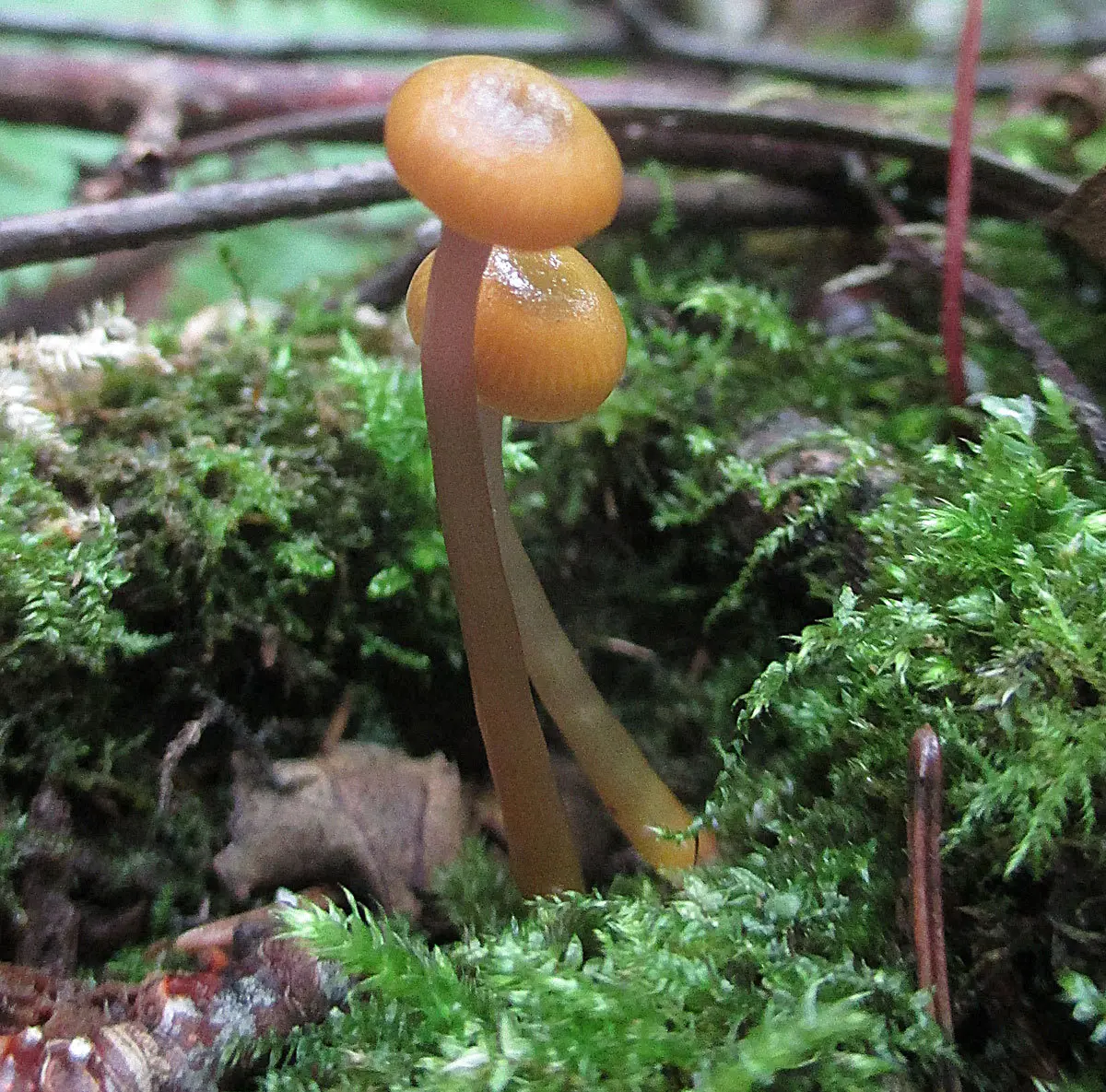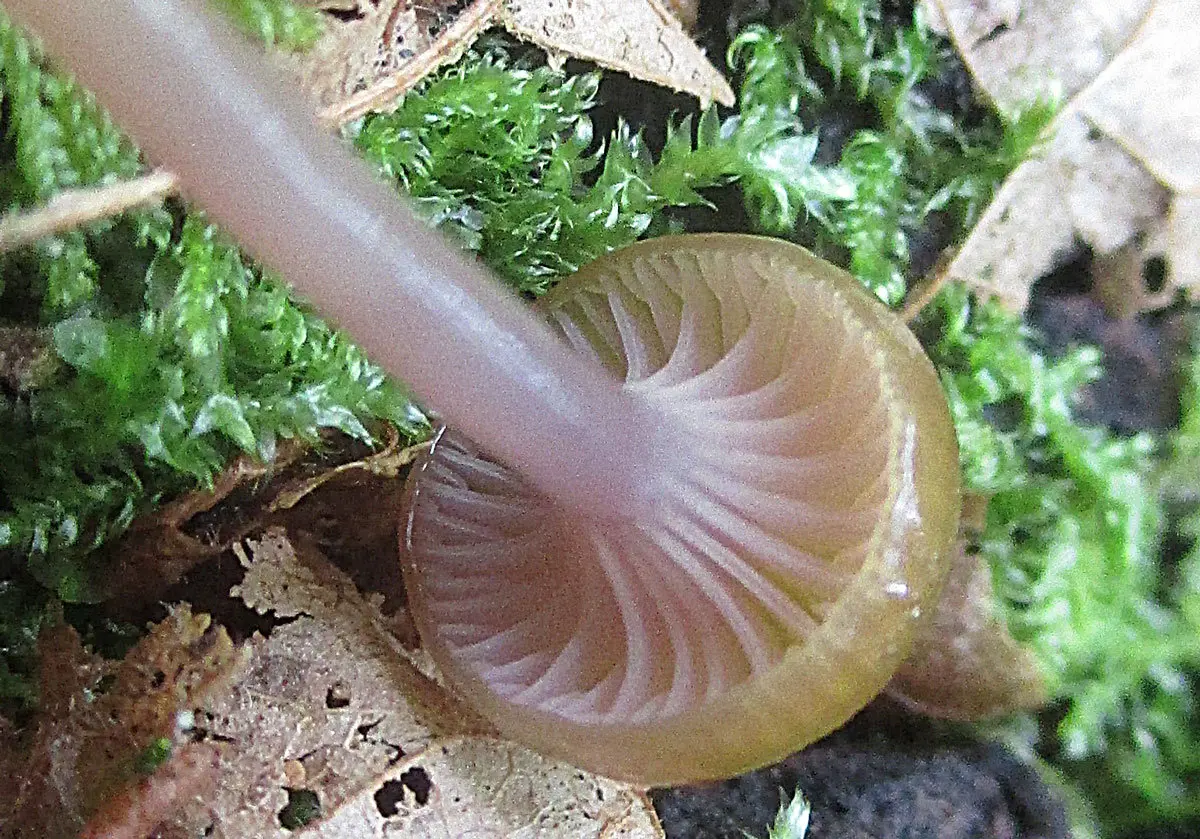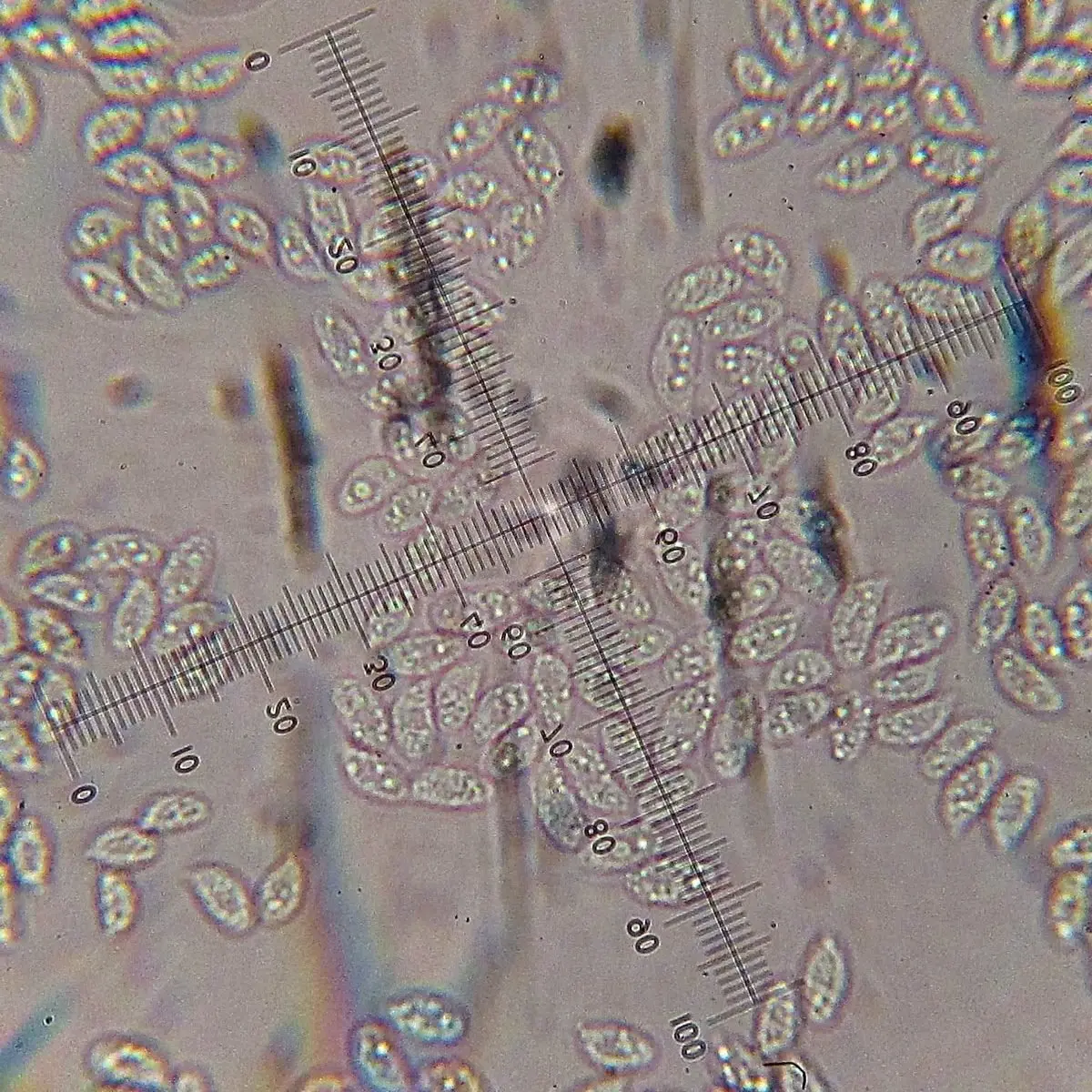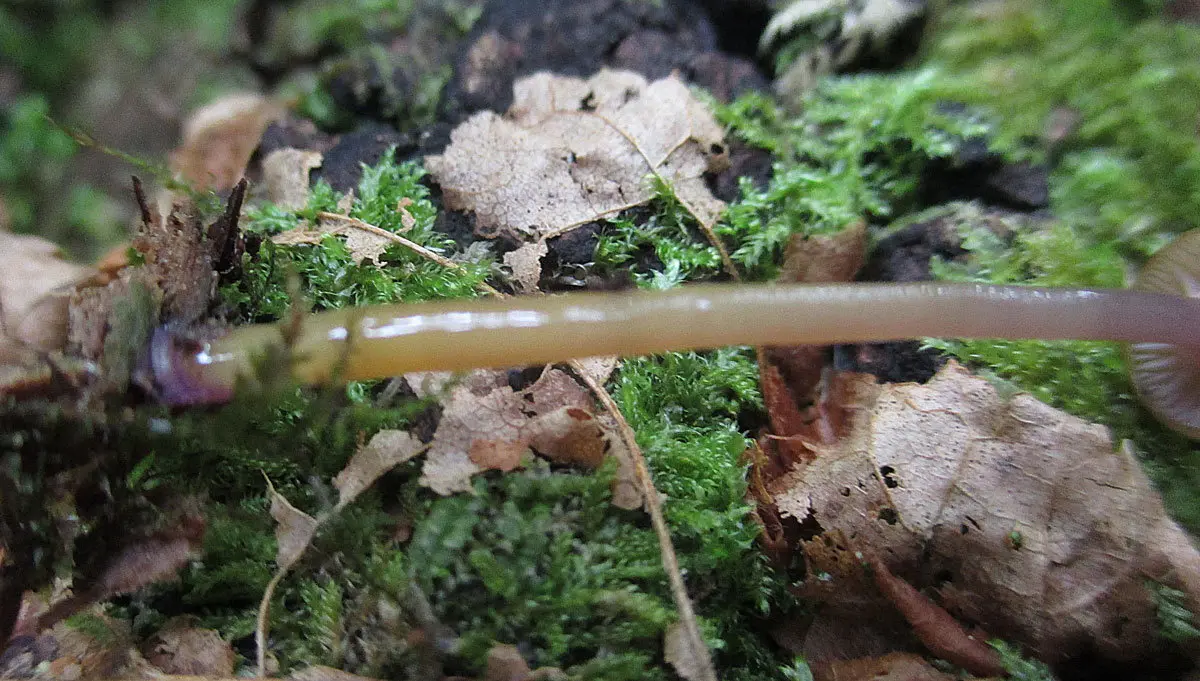Chromosera blue-plate (Chromosera cyanophylla)
- Division: Basidiomycota (Basidiomycetes)
- Subdivision: Agaricomycotina (Agaricomycetes)
- Class: Agaricomycetes (Agaricomycetes)
- Subclass: Agaricomycetidae (Agaricomycetes)
- Order: Agaricales (Agaric or Lamellar)
- Family: Hygrophoraceae (Hygrophoraceae)
- Genus: Chromosera
- Type: Chromosera cyanophylla (Chromosera blue-plate)
:
- Omphalina cyanophylla
- Omphalia cyanophylla

head 1-3 cm in diameter; first hemispherical with a flattened or slightly depressed center, with a tucked edge, then truncated-conical with a raised or turned up edge; smooth, sticky, slimy in wet weather; striatal from the edge of the cap and up to ¾ of the radius; in older specimens, possibly hygrophanous. The color in the beginning is dull yellow-orange, ocher-orange, olive green with orange tints, lemon yellow; then dull yellow-olive with green, orange and brown hues, greyish-olive in old age. No private veil.
Pulp thin, shades of colors of the cap, taste and smell are not expressed.
Records thick, sparse, descending, there are up to 2 groups of sizes of shortened plates. The color is initially fawn pink-violet, then blue-violet, and, in old age, gray-violet.

spore powder white.
Споры elongated, various shapes, 7.2-8×3.6-4.4 μm, Q=1.6…2.5, Qav=2.0, Me=7.7×3.9, thin-walled, smooth, hyaline in water and KOH, non-amyloid, not cyanophilic, with a pronounced apiculus.

Leg 2-3.5 cm high, 1.5-3 mm in diameter, cylindrical, often with an extension at the base, often curved, mucous, sticky and shiny in high humidity, sticky, dirty-cartilaginous in dry weather. The colors of the legs are varied, with purple-brownish, yellow-violet, yellow-green, olive hues; dirty fawn in young or old mushrooms; at the base often pronounced bright blue-violet.

It grows in the first half of summer (perhaps not only, these are my personal observations, according to which it grows together with Mycena viridimarginata both in time and in substrate), on rotten coniferous wood: spruce, fir, according to the literature, less often, and pines.
There are no similar species, due to the very peculiar color of the fruiting bodies. At first, superficial, glance, some faded specimens can be mistaken for Roridomyces roridus, but, at a second glance, this version is swept aside immediately.
Edibility is unknown.









